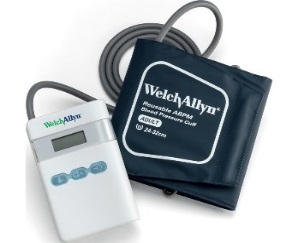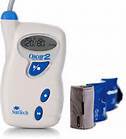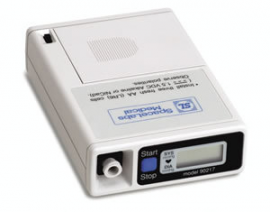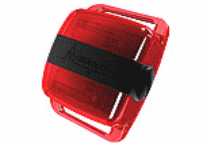ABPM Info Sheet
ATT1e_ ABPM Info Sheet 071416.docx
National Health and Nutrition Examination Survey
ABPM Info Sheet
OMB: 0920-0950
Attachment 1e
National Health and Nutrition Examination Survey (NHANES)
Ambulatory Blood Pressure Monitoring (ABPM) Feasibility Study
Participant Information Sheet
Participant information sheet
Ambulatory Blood Pressure Monitoring Information for the Participant
You are agreeing to undergo Ambulatory Blood Pressure Monitoring (ABPM). ABPM may be
done to get a more accurate measurement of a person’s average blood pressure. This test has been available for years, and many people have undergone this test without difficulty.
This test is non-invasive with minimal risk. It may cause sleep disturbance, general discomfort, tingling on the arm and skin irritation.
You will wear a portable blood pressure device on your arm for 24 hours.
The blood pressure cuff will be placed on your upper arm under your clothing, directly against the skin.
If for any reason you need to remove the device, please take off the device.
The cuff connects with a rubber tube to the monitor. This is a small box about 3 by 4 inches in size that can be worn over your shoulder with a strap, attached to your belt, or carried in a large pocket in your clothes. At night the cuff is kept on, and the device is placed next to you in your bed or under your pillow. You will not be able to take a bath or shower while wearing the cuff and you should not plan to do vigorous exercise (that is, exercise to the point where you sweat a lot). Otherwise, you should go about your usual daily activities, including work, household tasks, and so on. If you decide to take a bath or a shower you must remove the device. If you remove the blood pressure cuff at any point during the 24-hour monitoring period you need to make sure you reapply the cuff in the same position as when originally fitted. If you need to, you can use the handout that we provided to correctly reapply the device to your arm (Device removal and reapplication for participant- handout will be developed for each of the ABPM devices once we have them in-house). If you are unsure you can call the toll free number 1-800-xxx-xxxx for advice.
The blood pressure device will take a reading every 30 minutes during the day, and every 30 minutes at night. While a reading is being taken, the cuff will inflate and squeeze your arm firmly, just as the cuffs used to take your blood pressure in your healthcare provider’s office or in pharmacies. While the cuff is inflating and deflating, it is best to try to avoid moving your arm, as this may interfere with the reading. If the monitor has trouble getting a reading, it may re‐inflate in a minute or so to try a second time. The cuff will not inflate more than two times to take a reading.
When you return the next day to have the cuff removed, the technician will take off the cuff, ask you to fill-out the post-study questionnaires, process your remuneration and provide you with your results.
We strongly urge you to leave the cuff on for as close to 24 hours as possible. If the cuff is too uncomfortable you should remove the device. Do not press any of the buttons on the device.



W hat
is an activity device? An
activity device is a small device that records information about body
movement during everyday activities such as walking. The device is
safe, and uses a battery similar to a watch battery for power. It is
not
a
GPS tracking device, nor does it record heart rate. Many studies with
children and adults have used activity devices.
hat
is an activity device? An
activity device is a small device that records information about body
movement during everyday activities such as walking. The device is
safe, and uses a battery similar to a watch battery for power. It is
not
a
GPS tracking device, nor does it record heart rate. Many studies with
children and adults have used activity devices.
Who do I contact if I have questions? If you have any questions about the device, please call our office at the toll-free number 1-888-xxx-xxxx. Don’t forget to complete your study diary.
| File Type | application/vnd.openxmlformats-officedocument.wordprocessingml.document |
| File Title | CDC INSTITUTIONAL REVIEW BOARD (IRB) |
| Author | vlt0 |
| File Modified | 0000-00-00 |
| File Created | 2021-01-23 |
© 2026 OMB.report | Privacy Policy